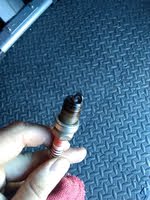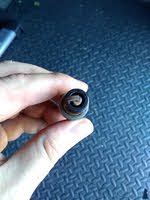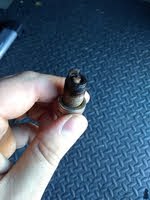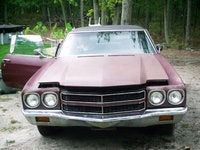69 Chevy Chevelle issues?
Asked by Lewis Sep 20, 2020 at 10:45 PM about the 1969 Chevrolet Chevelle SS Sport Coupe RWD
Question type: Maintenance & Repair
I noticed when I started the car that there is excess
smoke coming from the exhaust, as well as a little
bit of oil when I revved the engine. The car does
not move when idling and takes a lot of gas to
move. Additionally, the exhaust smells like it's
burning oil. From what I have been reading seems
like worn piston rings. Any other thoughts or
solutions? I read about the additive you can use to
the oil but I am very hesitant to use that.
8 Answers
You have an oil burner. The valve guide seals may be the culprit. You may also have a transmission problem. Have you checked the fluid level?
What color is the smoke? Blue is oil burning, black is too much fuel, grey is transmission fluid, and white billowing "smoke" with a sweet smell is coolant. I'm thinking you need a good tune up, PCV system service, and some carburetor work or a rebuild. What do the spark plug electrodes look like? Dry black fluffy deposits? Wet black deposits? Medium grey deposits? White? Get back to us with that information and we can go from there. I always advise against additives of any kind. Except lead substitute and maybe octane booster in your case. You should be adding lead substitute at every fill up unless you know the heads have been rebuilt and they are unleaded gasoline compliant. GM vehicles can safely use unleaded gasoline beginning with the 1971 models. Hope that helps! Jim
There is one additive my buddy Js did not mention and that is ZDDP for your oil. Zinc in the oil is essential for flat tappet engines like yours. Which engine do you have?
Okay gents, Got answers for you guys. Transmission fluid level is showing full and has dextrin 3. Current oil in the system is Amsoil Z-rod oil. It is old and needs changed. I currently plan on replacing it with Lucas oil SAE 10w-40 high zinc for classic cars. Oil is also showing just below full level. Engine is a 396 L-78 engine. Smoke is more whitish and billowing. Spark plugs are a mix. One was dark and gray looked like just a used spark plugs but there were four that had oil on them. They were wet and black see the uploaded photos for more. Currently using premium unleaded which is what the dealer recommended and honestly haven't driven it but 20 miles since I bought it. Dealer also recommended if not driving all the time to add fuel stabilizer. Let me know what else you guys need to help me assess. Thank you for the info. I have a local classic mechanic that I can contact as well as this seems to be a little bit out of my wheelhouse. Standing by for further guidance.
The two spark plug photos look perfect. Good air to fuel mixture, no carburetor issues, etc. The white billowing smoke concerns me! That could be a blown head gasket or bad intake manifold gasket. There's a coolant crossover passage in the intake manifold that could be leaking and allowing coolant into a few of the cylinders. Are you losing coolant? A fuel stabilizer is good for vehicles that aren't driven much and with that engine you definitely need premium gasoline. You should be adding a lead substitute to each fill up because the vehicle was made before 1971. Next thing I'd do is a cooling system pressure test. With the engine cold pressurize the cooling system to 15 PSI. It should hold for 15 minutes minimum. If not, something is leaking. With the system still pressurized start the engine. If the needle on the pressure tester gauge bounces, you have a blown head gasket. With something this old I'd also recommend a compression test. If two cylinders that are next to each other test very low, you have a blown head gasket. Super clean spark plug electrodes also point to a blown head gasket because the coolant getting into the combustion chamber will steam clean the electrodes of the spark plug. Hope that helps! Jim
The L78 is a very desirable and valuable engine. It is worth doing a proper rebuild on. In the meantime if you have oil fouled plugs you can go to a hotter spark plug as a stop gap.



